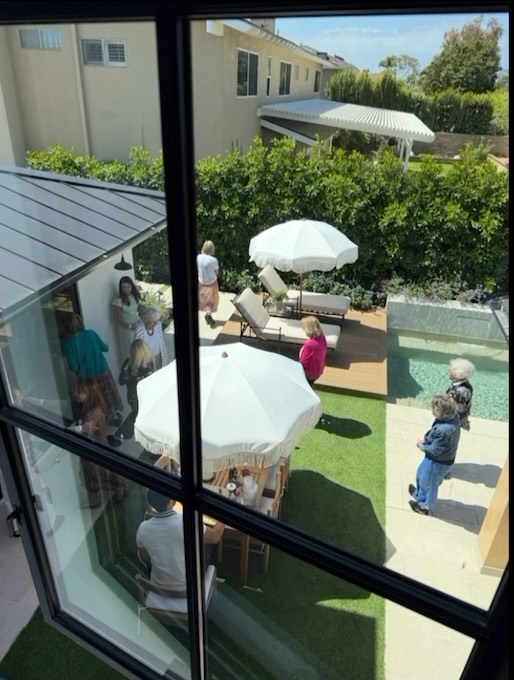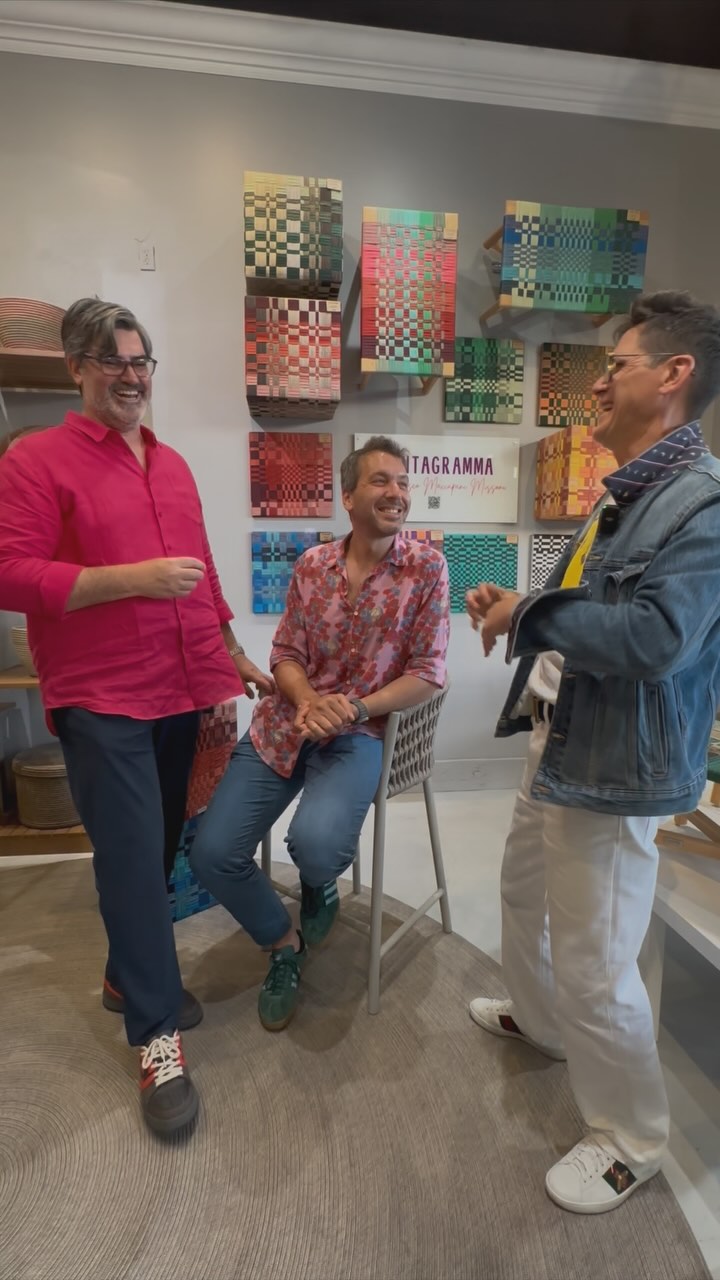A binge-worthy design book looks at the most beautiful rooms in the world

Above: Situated in a leafy neighborhood of São Paulo, this streamlined single-story home is the work of Studio MK27. Retractable doors on both sides of the space allow it to be completely integrated with the surrounding garden.
“It’s important to have a home that makes you feel safe and comfortable. It’s a nice refuge from all the madness.”
– NYC designer Sheila Bridges
Spending so much time hunkered down in our own homes as we all are, it’s natural to be appreciative of our surroundings while also thinking about ways we might improve our aesthetic environments. Everyone who has admired/critiqued interior design choices (not to mention casual fashion sensibilities) as revealed during a Zoom meeting, please raise your hand. That’s what we thought.
One way to satisfy our creative curiosity about alternative design options is to gaze admiringly at some of the most beautiful rooms from the past 100 years or so. Luckily, there’s a book for that titled, conveniently enough, Interiors: The Greatest Rooms of the Century.

Curated by the editors of publisher Phaidon and William Norwich, former editor of Vogue and Architectural Digest, the volume looks at 400 residential interiors from 25 countries created by decorators, architects, and designers, as well as fashion brand icons, movie stars, artists, and others. Gaze at rooms where Christian Dior, Cary Grant, Coco Chanel, Peggy Guggenheim, Karl Lagerfeld, Halston, and Frida Kahlo once lived. Each room is represented by a single photo and a short text describing the work and the designer/owner.




Situated in a leafy neighborhood of São Paulo, this streamlined single-story home is the work of Studio MK27. Retractable doors on both sides of the space allow it to be completely integrated with the surrounding garden.
Norwich’s introduction is a historic (and at times hysterical) essay that touches on the evolution of interior design; the influence of early designers such as Elsie de Wolfe and writers and tastemakers like Edith Wharton; the importance of photography for midcentury modern design; and the growth of shelter magazines.
“It’s gracious living—paying attention to one’s environment so one doesn’t survive in chaos, but thrives with intention,” writes Norwich. “Isn’t feathering a nest the best kind of soldiering on, showing how the harmonies of a refuge of one’s own can soothe in an inharmonious world?”
Spending so much time hunkered down in our own homes as we all are, it’s natural to be appreciative of our surroundings while also thinking about ways we might improve our aesthetic environments. Everyone who has admired/critiqued interior design choices (not to mention casual fashion sensibilities) as revealed during a Zoom meeting, please raise your hand. That’s what we thought.
One way to satisfy our creative curiosity about alternative design options is to gaze admiringly at some of the most beautiful rooms from the past 100 years or so. Luckily, there’s a book for that titled, conveniently enough, Interiors: The Greatest Rooms of the Century.
Curated by the editors of publisher Phaidon and William Norwich, former editor of Vogue and Architectural Digest, the volume looks at 400 residential interiors from 25 countries created by decorators, architects, and designers, as well as fashion brand icons, movie stars, artists, and others. Gaze at rooms where Christian Dior, Cary Grant, Coco Chanel, Peggy Guggenheim, Karl Lagerfeld, Halston, and Frida Kahlo once lived. Each room is represented by a single photo and a short text describing the work and the designer/owner.
Norwich’s introduction is a historic (and at times hysterical) essay that touches on the evolution of interior design; the influence of early designers such as Elsie de Wolfe and writers and tastemakers like Edith Wharton; the importance of photography for midcentury modern design; and the growth of shelter magazines.
“It’s gracious living—paying attention to one’s environment so one doesn’t survive in chaos, but thrives with intention,” writes Norwich. “Isn’t feathering a nest the best kind of soldiering on, showing how the harmonies of a refuge of one’s own can soothe in an inharmonious world?”





















![🎨✨ Color meets creativity at the coast ✨🎨
Join Bloor Door Magazine and Tidelli Outdoor Living @tidellioutdoor for an unforgettable evening with Francesco Maccapani Missoni @fmaccapani , the visionary behind the Pentagramma Collection.
📍 Tidelli Outdoor Living - Orange County
7876 East Coast Highway Newport Beach, CA 92657
🗓 Wednesday, May 21 | 🕕 6–7:30 PM (Doors at 5:30)
Expect:
🌈 A deep dive into the art of combining color
🎤 Live talk + Q&A with Francesco
👀 Behind-the-scenes of the Pentagramma Collection
🍸 Light bites + good vibes
Come get inspired by bold rope hues, timeless design, and Italian soul.
🎟 RSVP now → [link in bio]
#Missoni #TidelliOutdoorLiving #BloorDoorMagazine #DesignEvent #FrancescoMissoni #ColorStory #NewportBeachEvents #InteriorInspo #DesignTalks](https://bluedoormagazine.com/wp-content/uploads/2024/03/499443917_18279427363301802_778893880365426415_n.jpg)

